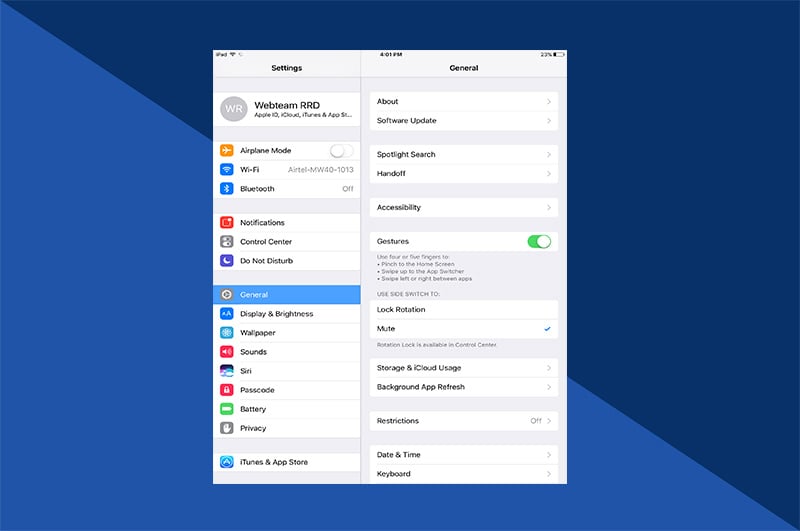The iPhone’s built-in camera settings are full of helpful features to make taking better photos a breeze. From setting the timer for hands-free shooting to adjusting the brightness for a well-exposed shot, our guide covers everything you need to know about the Camera app’s best features and how to use them.
How to adjust iOS camera settings for optimum quality
While most camera features are available within the Camera app, some are only accessible via Settings – adjusting your iPhone camera size settings, for example.
To change your photo resolution to the highest quality available, follow the steps below:
1. Open Settings on your iPhone
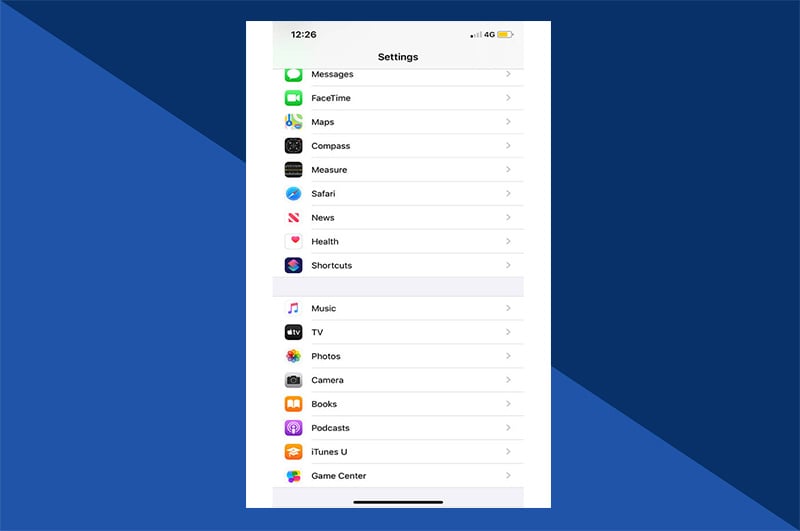
2. Click on Camera.
3. Select Formats.
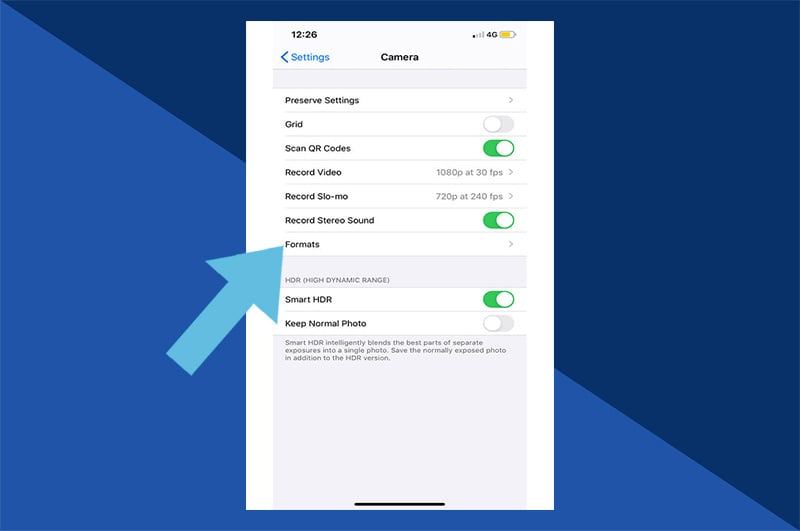
4. Select Most Compatible. This results in higher quality photos by saving images in JPEG format.
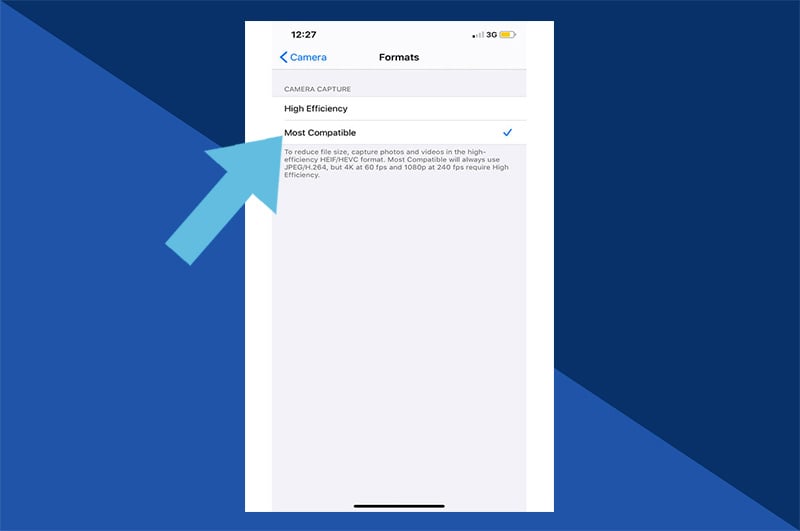
To change your video resolution to the highest quality available, follow the steps below:
1. Open Settings on your iPhone.
2. Click on Camera.
3. Select Record Video
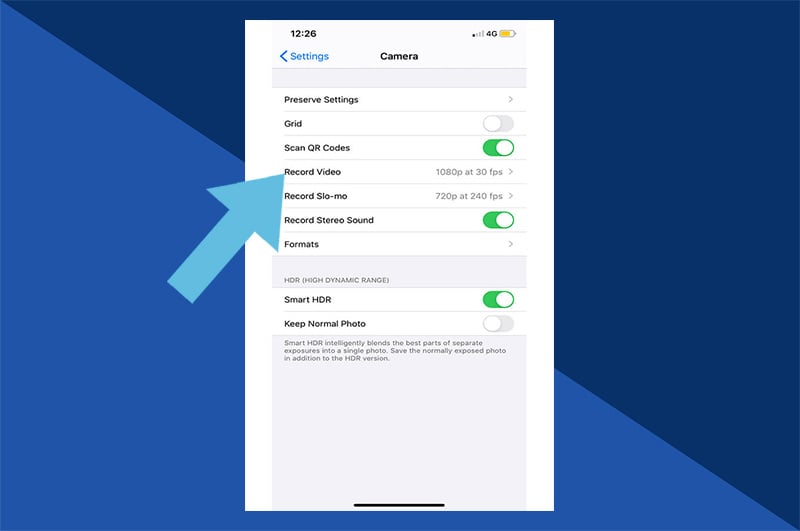
4. Select the highest resolution available.
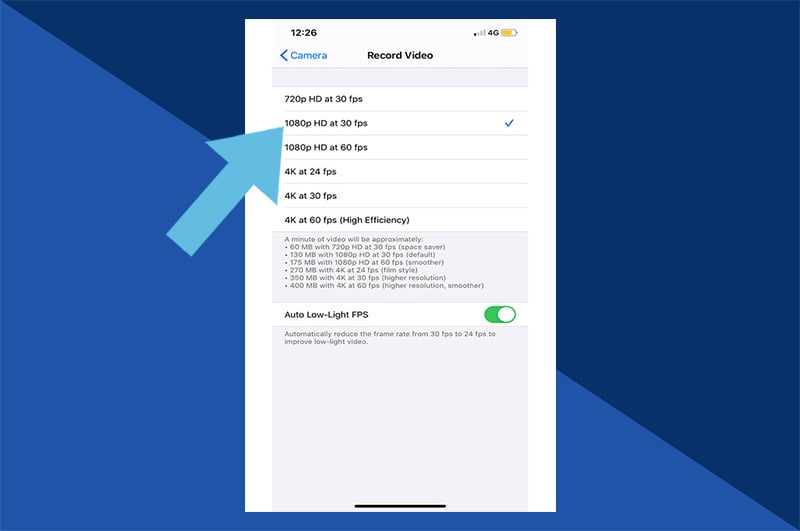
Useful iPhone camera settings
There are a number of settings available within the Camera app that can help you take better photos. From using the grid feature to create a well-composed shot to enabling Portrait mode for a blurred out background, once you nail the basics, you’ll be creating striking images in no time.
Below, we take a look at some of the best iPhone camera settings to help you take images you can be proud of.
Using focus for sharper images
Ensuring your subject is in focus is the best way to take impressive photographs. Luckily, the iPhone Camera app makes setting the focus easy – simply frame your shot, then tap the screen where you want to focus. A yellow box will appear to show you the focus point. This will ensure the subject of your photo isn’t blurry, giving you a crisp, clear shot.
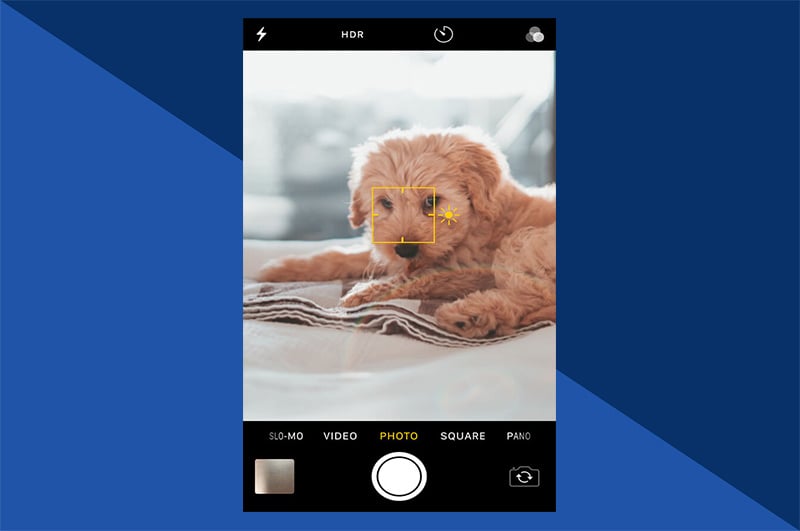
Taking live photos with filters
Want to change the colour or tone of your photograph to make the colours pop? No problem, simply use filters! With options ranging from Vivid and Mono to Silvertone and Dramatic, the iPhone’s built-in camera filters can you help tweak your images in just a few simple taps.
1. Open your Camera app.
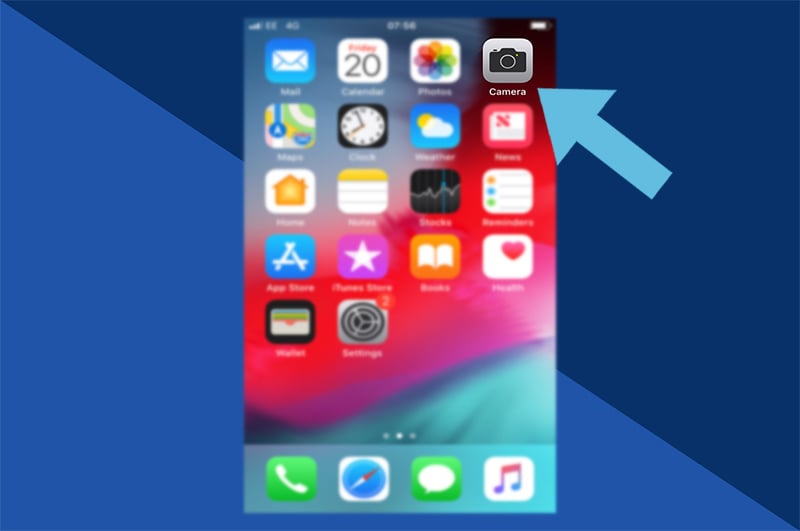
2. Tap the filter icon in the top right-hand side (this looks like three overlapping circles).
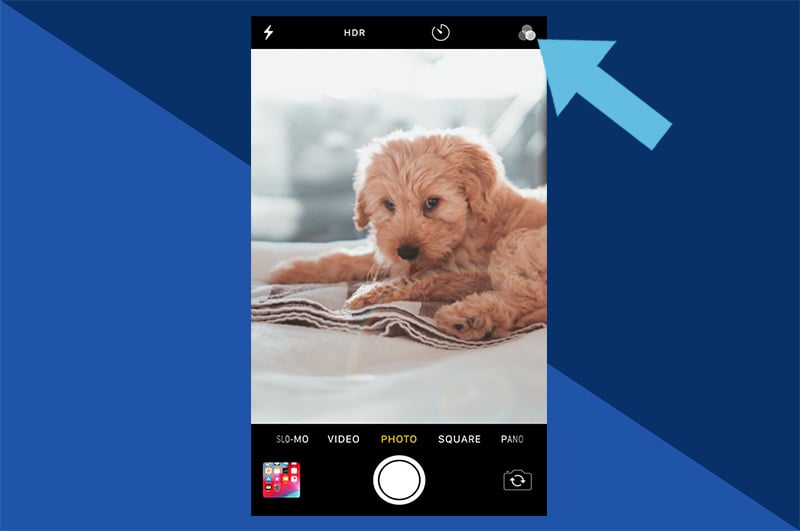
3. Scroll through the filters until you find one you like.
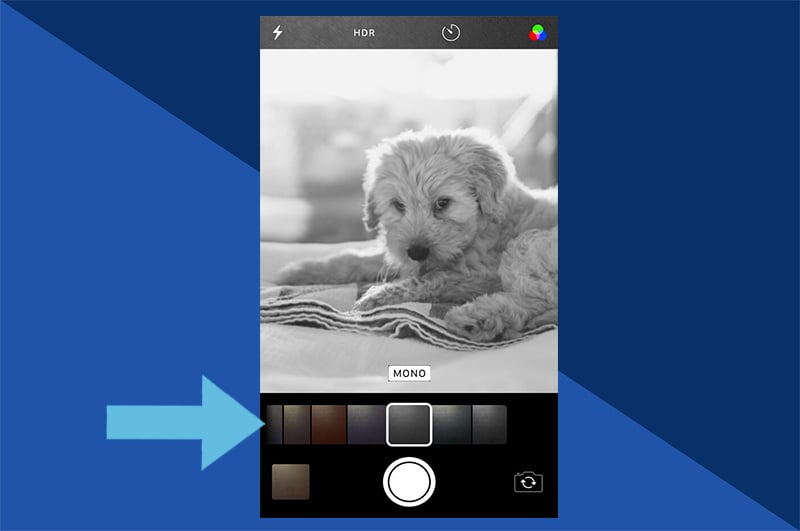
4. Take your shot.
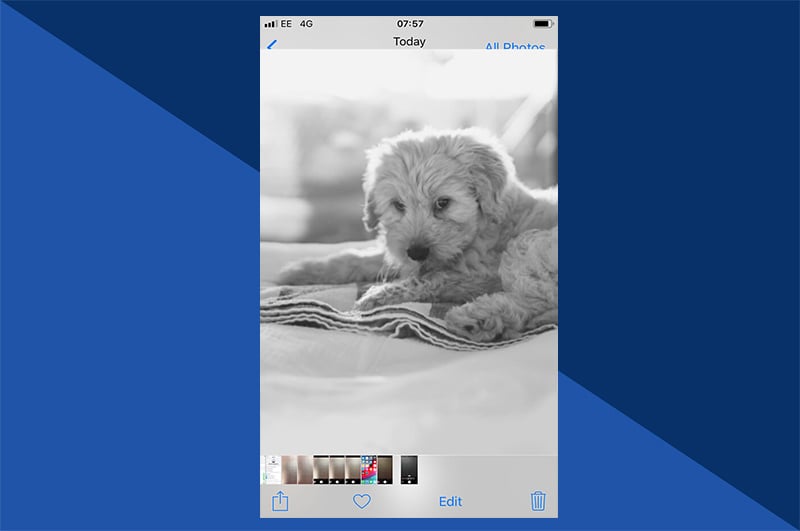
5. When a filter is applied, the icon will change from white circles to coloured circles.
6. To remove the filter, tap the filter icon and scroll back to Original.
Using exposure to make photos lighter or darker
Exposure refers to the brightness of your photo. If it’s underexposed, it means the photo is too dark, and if it’s overexposed, it means the photo is too light.
When you tap your photo to focus your subject, the iPhone automatically sets your exposure level. However, you can adjust the exposure manually by following the steps below.
1. In the Camera app, set the focus of your image by tapping it.
2. Once the yellow box has appeared, simply swipe up or down to increase or decrease the brightness.
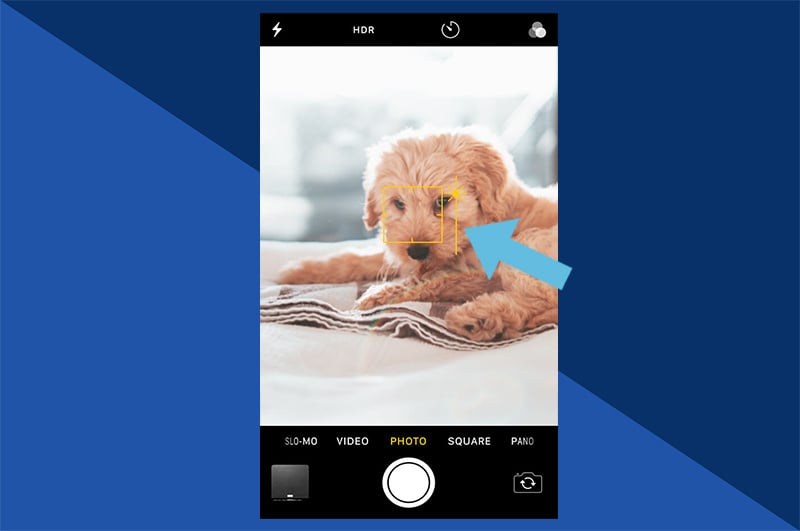
3. When the exposure looks good, tap to take your photo.
Using the grid feature for better composition
The rule of thirds is a well-known photography technique that can help you take better images. Using two horizontal and two vertical gridlines, you can place your subject slightly off centre to create a better-composed photograph. The gridlines are also useful for making sure your images are straight.
1. Open Settings on your iPhone.
2. Tap Camera.
3. Make sure Grid is enabled.
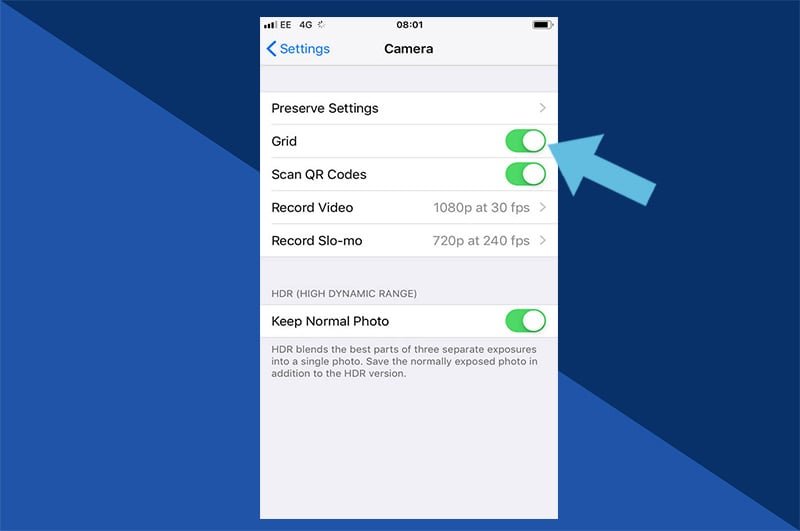
Capture multiple action shots with burst mode
Want to take impressive action shots on your phone? Burst mode is great for photographing moving subjects. The feature takes 10 photos per second, so getting a shot of the perfect pose is easy.
To use burst mode on an iPhone 11 and above:
1. In the Camera app, slide the shutter button to the left until you reach burst mode.
2. Hold down your finger to use burst mode (the camera will continue taking photos until you release your finger from the screen).
For an iPhone XS and older:
1. In the Camera app, simply hold down the shutter button to shoot in burst mode.
Using HDR to help you shoot in difficult conditions
High Dynamic Range (HDR) lets you take well-lit photos that don’t blow out highlights or lose detail in shadows. By taking several photos at different brightness levels and automatically blending these together, the HDR setting on your iPhone helps you create a well-exposed image in tough conditions.
1. In the Camera app, click the HDR icon.
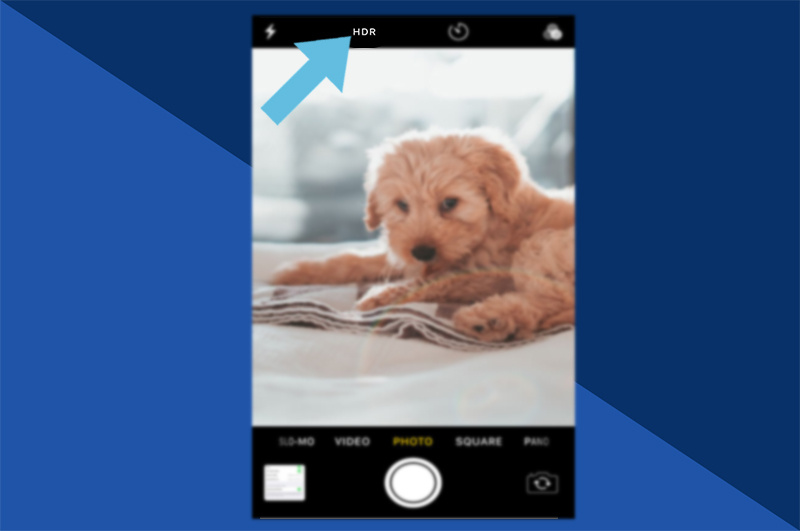
2. From here, you can decide to let your camera automatically enable HDR, or turn it on or off manually.
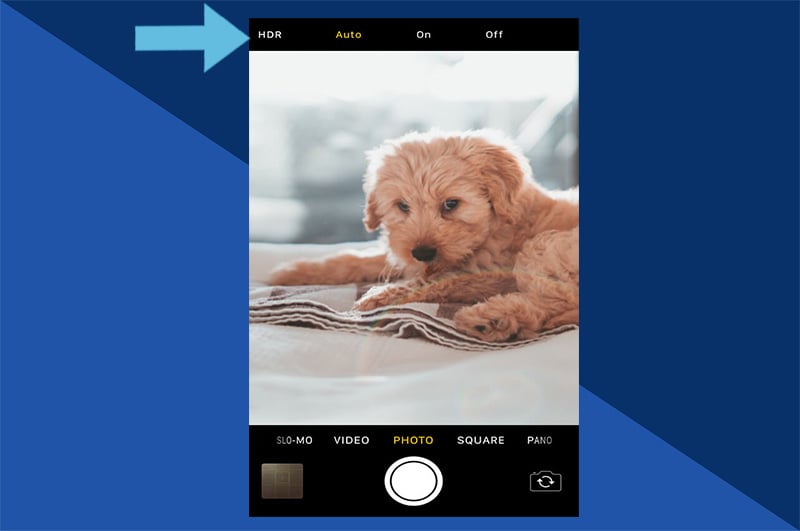
3. Once you’ve enabled HDR, the icon will turn yellow.
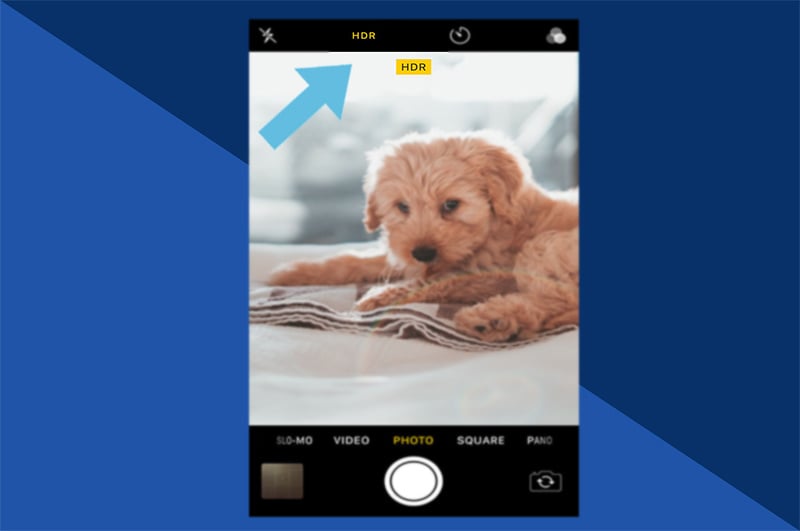
4. Tap the icon again to turn HDR off.
Using live photo to capture movement
By capturing the moments just before and after you take your shot, live photo creates a moving image complete with movement and sound that helps bring it to life. These 3-second videos are a great way to remember special moments beyond a simple, static image.
1. In the Camera app, click the live photos icon (a circular icon with a diagonal line through it).
2. Once live photos are enabled, the icon will turn yellow.
3. Tap the icon again to turn live photos off.
Using Portrait mode to blur image backgrounds
If you want to take professional-looking photographs, Portrait mode creates a shallow depth of field to accentuate your subject and blur the background of your shot – creating a similar effect to a DSLR camera. To use it, simply follow the steps below.
1. In the Camera app, scroll along to Portrait mode.
2. Ensure your subject is between two and eight feet from the camera.
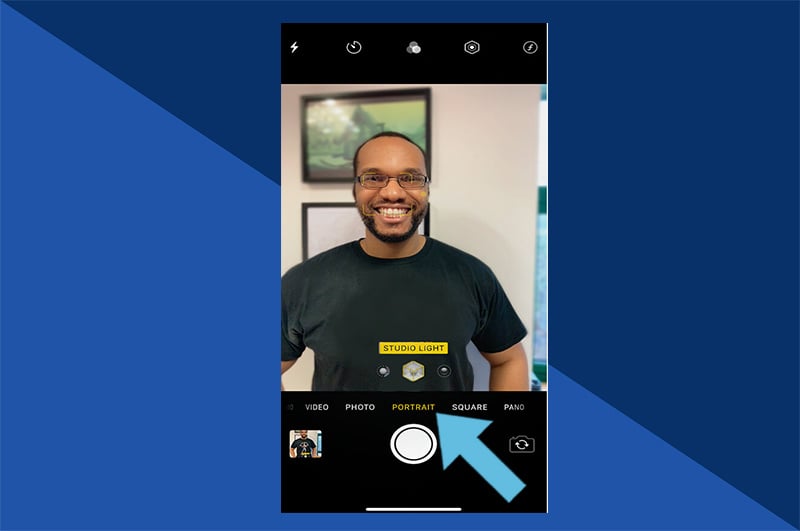
3. Wait for the yellow focus box to appear around your subject.
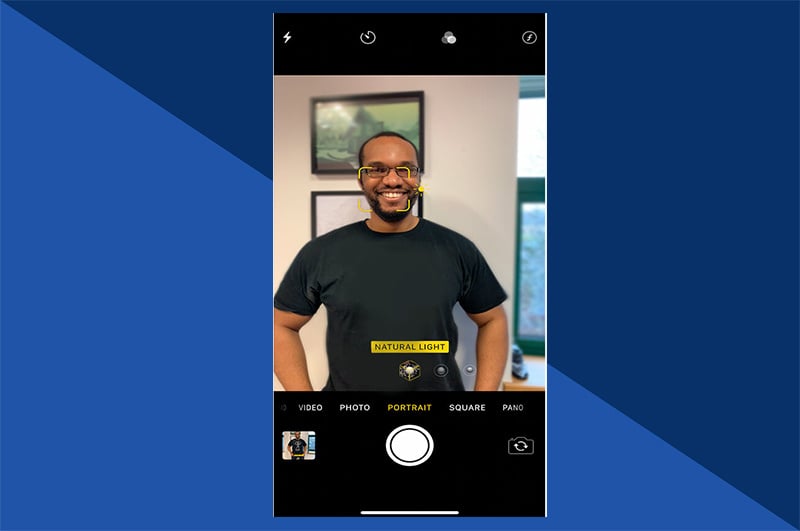
4. When Portrait mode is ready, the words ‘Natural Light’ will appear on the screen.
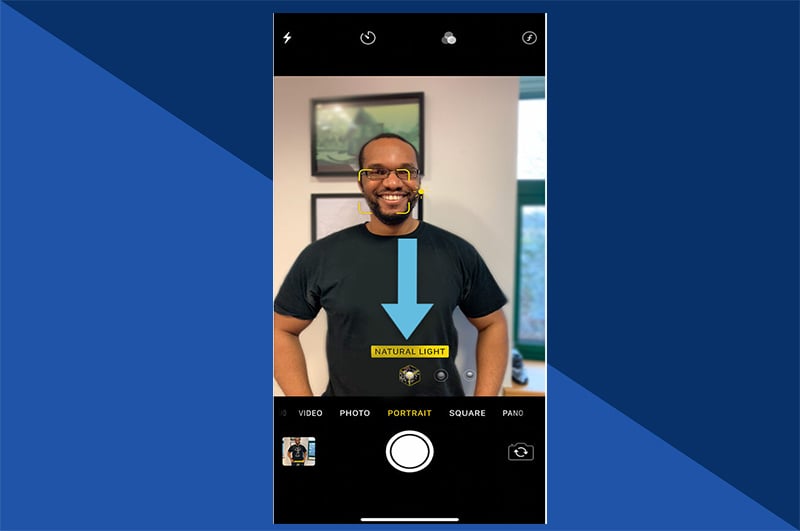
5. Tap the shutter button to take your portrait.
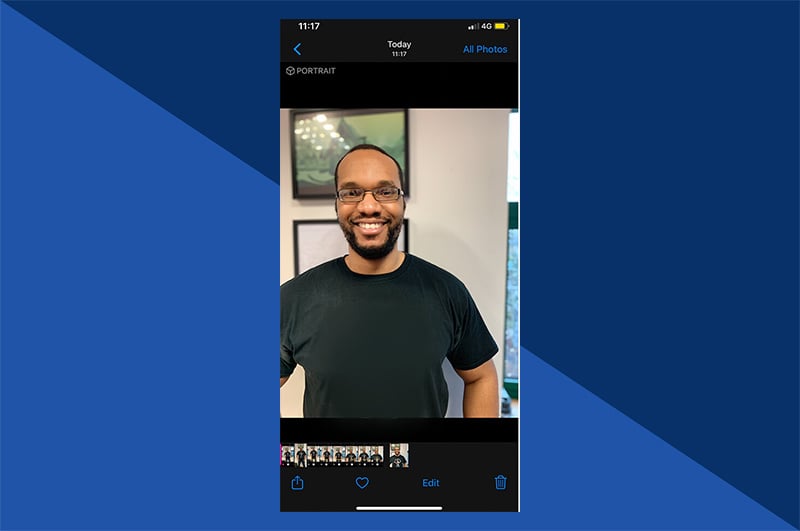
Setting the timer for hands-free shooting
The self-timer function creates a delay between pressing the shutter and your image being taken. This means you can shoot hands-free and even appear in the photograph yourself if using a tripod or balancing your iPhone on a sturdy surface. Here’s how.
On an iPhone 11 and above:
1. Tap the up arrow at the top of the screen to display additional settings.
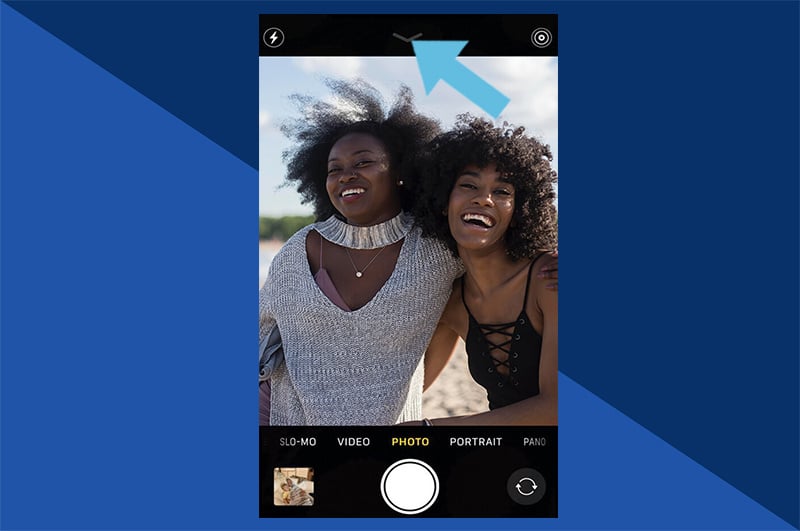
2. Select the timer icon.
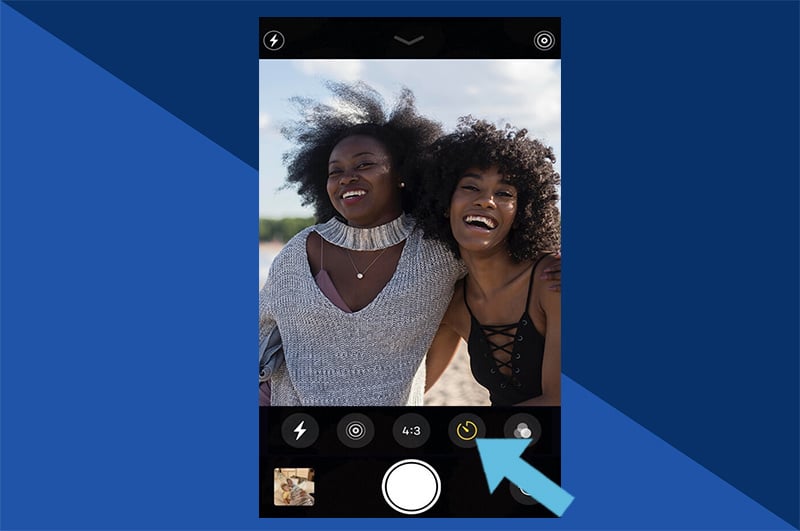
3. Select either a 3-second or 10-second delay.
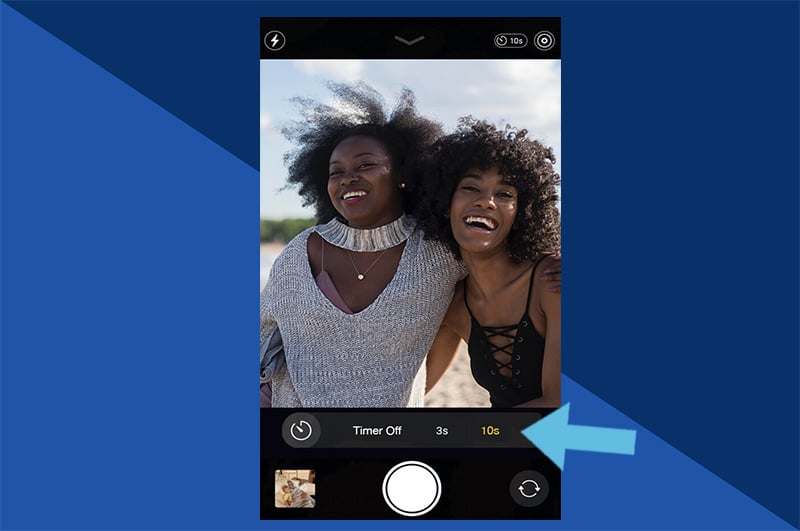
4. When you’re ready, press the shutter.
On an iPhone XS and below:
1. Tap the timer icon at the top of the screen.
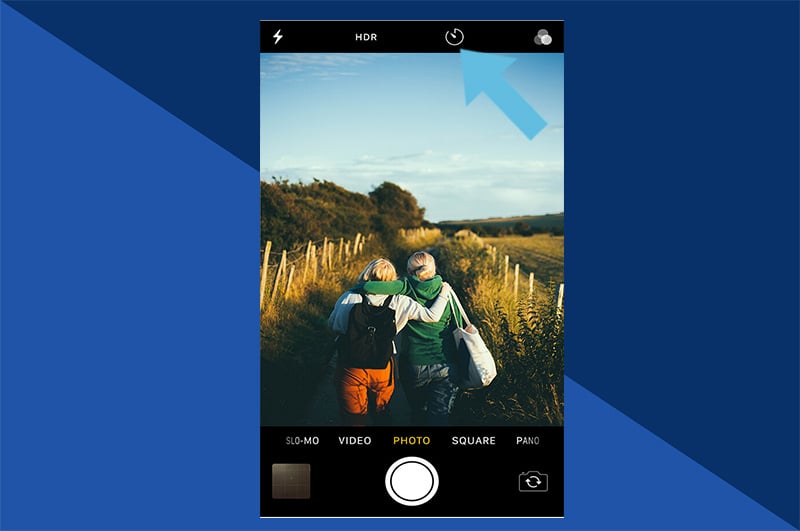
2. Select either a 3-second or 10-second delay.
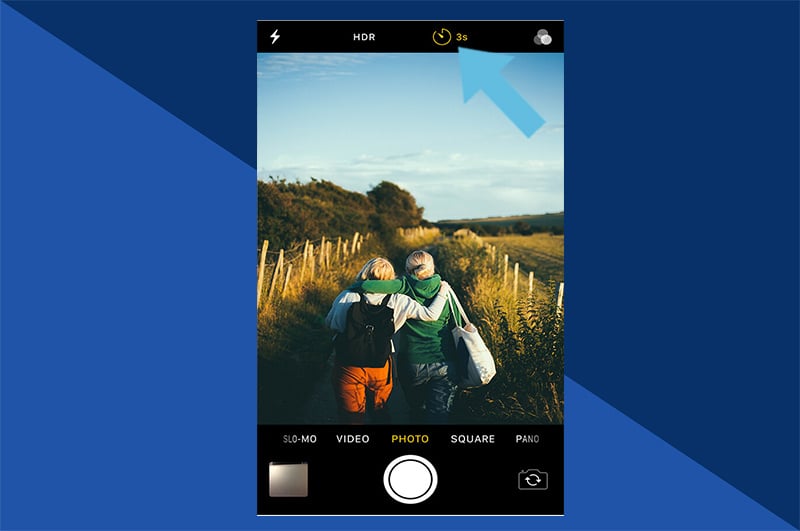
3. When you’re ready, press the shutter.
New features on the iPhone 11 Camera
The launch of the iPhone 11 brought with it some exciting new features and functionality which offer significant upgrades to the camera. Let’s take a look at some of the features of the iPhone 11 that will help you take better images.
Tri-lens camera
Now boasting a 12-megapixel main lens, an ultra-wide-angle lens and a telephoto lens, the iPhone 11’s photographic capabilities allow you to take your shots to the next level. Shoot wide, shoot close up, shoot in high quality – the iPhone 11 lets you get more creative with your images.
Night mode
Shooting in low light? No problem! Night mode works automatically to capture dark subjects with natural colours and lighting, without the need for flash.
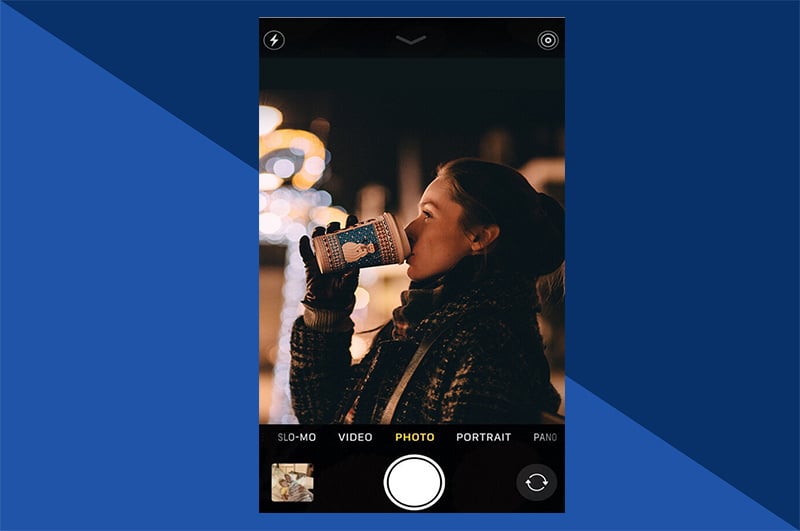
Smart HDR
The iPhone 11 uses machine learning to ensure faces are captured with beautiful highlights and natural-looking skin tones, while ensuring the shot is well-exposed in both the highlights and shadows.
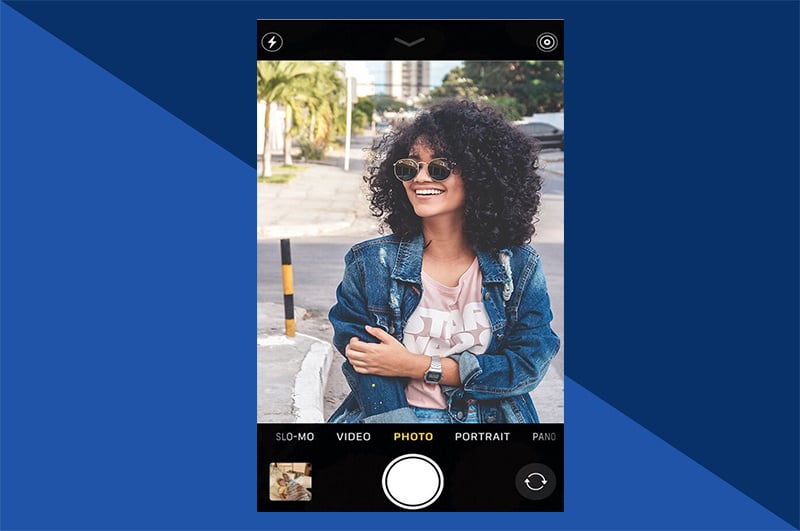
Bring your photos to life with Motif
Now you’re taking better photos, why not create a beautiful memory book with Motif? Whether it’s your holiday photos, arty snaps of your dog, or a family photo album, creating a personalized photobook is easy with Motif.
With over 80 personalized layouts and the option to choose backgrounds and sizes that suit you, a photobook offers a great way to celebrate and share your favourite shots with family and friends. Download the app today and give your stories a home with Motif.











